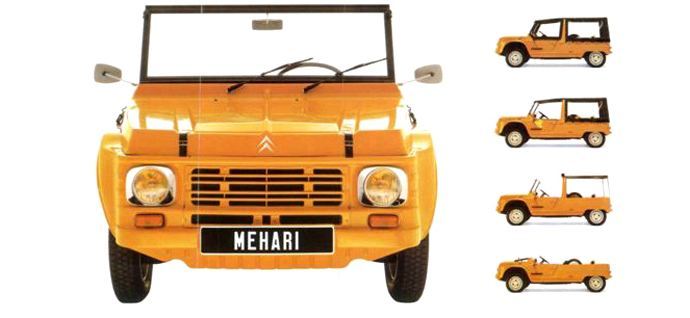
The Citroën E-Méhari is the latest example of an iconic vehicle of the past being reinvented and electrified in a bid to boost electric car sales. The car buying public is still reluctant to invest in alternative fuelled cars due to their high purchase cost and dismal re-sale values, but recreations of classic vehicles may have the power to tug at both heart and purse strings.
At first glance, it’s easy to dismiss the Citroën Méhari as little more than a novelty version of the 2CV with which it shares an engine and chassis, a Mini Moke to the early mini. It’s much more interesting that, however. The Méhari was named after a fast-running camel, which was apt because the car was a highly efficient beast that has much to teach us.
Today it might be described as an ‘off-road compact SUV’, but in contrast with the two-ton leviathans that now prowl our urban streets, the original Méhari weighed in at a paltry 535 kg. When supplied in four wheel drive, its low weight allowed it to embarrass conventional 4x4s.
Citroën E-Méhari
The Citroën E-Méhari retains the plastic body of the original, but ditches the tiny 602 cc petrol engine in favour of an electric motor. Although the new version is quieter and cleaner than its predecessor, it cannot compete on weight. Modern day safety requirements make it hard for car makers to build truly lightweight cars.
You need only look at how the original mini, or Fiat 500 or VW Golf have become bloated in their middle age. An appetite for treats like air conditioning and electric windows has contributed towards the weight gain, but it’s the car safety arms race that has seen the family runabout become ever more tank-like. Everybody wants to remain safe on the roads, but the heavier and faster the next car, the more robust your own vehicle needs to be.

Echoes of the original, but like so many modern cars, why the angry face?
Sometimes referred to as a micro car, a quadricycle is a four-wheeled vehicle with an unladen mass not more than 400 kg (excluding batteries if it is an electric vehicle) and whose maximum continuous rated power does not exceed 15 kW.
There is a perception that large, heavy cars such as 4X4s are safe, but they pose an increased risk to pedestrian in the event of a collision. Quadricycles on the other hand are designed to operate in urban areas at low speeds. According to Government figures, Greater Manchester has an average traffic speed of 12 mph, London 14 mph and South Yorkshire 15 mph. The fact that quadricycles are lighter than conventional cars makes them less of a risk to pedestrians and less damaging to the road surface. Furthermore, they are economical and almost entirely 100 per cent recyclable.
There’s a strong argument that in areas where people live and work, any vehicle heavier and faster than a quadricycle poses an unacceptable risk. If the next Citroën E-Méhari could be a lighter, cleaner and quieter version of the original it would definitely fulfil an important need. Unfortunately it would be far less likely to find a ready market.
Environmentally friendly breakdown cover
Not all breakdown companies are the same. Established over 25 years ago, and with over 5,000 recovery trucks on call 24/7, we have a proven track record of providing efficient, reliable breakdown cover. We have been voted ethical by the Good Shopping Guide.
We handpick only the best local mechanics and garages around Britain to send out if you break down. We believe this way of working is efficient, environmentally friendly and helps supports local communities and economies, too.
On top of this, we offset the carbon emissions of the recovery trucks that go out to assist you, reducing the impact your breakdown has on our environment. Every breakdown policy you buy helps fund the work of our charity, the ETA Trust, which campaigns for a safer, cleaner transport future.

0 Comments View now